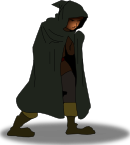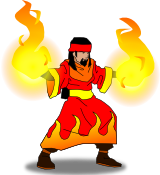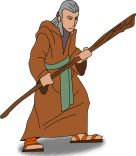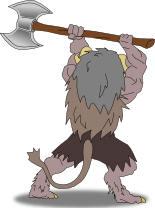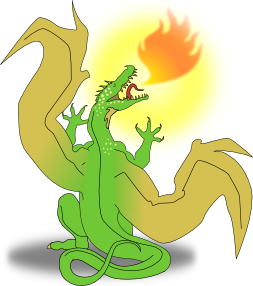Difference between revisions of "Mini mam"
(→Characters) |
|||
| Line 15: | Line 15: | ||
{| | {| | ||
| width="32%" valign="top" | | | width="32%" valign="top" | | ||
| + | [[Image:Minimam-rogue-healthy.png]] | ||
'''Rogue''' | '''Rogue''' | ||
| − | |||
| − | |||
Rogues are sneaky characters, like spies, burglars and scouts. Rogues have average fighting abilities but more skills which are useful outside of combat. | Rogues are sneaky characters, like spies, burglars and scouts. Rogues have average fighting abilities but more skills which are useful outside of combat. | ||
| Line 34: | Line 33: | ||
| + | [[Image:Minimam-wizard-healthy.png]] | ||
'''Wizard''' | '''Wizard''' | ||
| − | |||
| − | |||
Wizards can use their magical powers or spells to dramatically defeat enemies in combat. | Wizards can use their magical powers or spells to dramatically defeat enemies in combat. | ||
| Line 45: | Line 43: | ||
| width="2%" | | | width="2%" | | ||
| width="32%" valign="top" | | | width="32%" valign="top" | | ||
| + | [[Image:Minimam--healthy.png]] | ||
'''Warrior''' | '''Warrior''' | ||
| Line 60: | Line 59: | ||
| + | [[Image:Minimam-priest-healthy.png]] | ||
'''Priest''' | '''Priest''' | ||
| − | |||
| − | |||
A priest provides essential support to keep other characters fighting. Although a priest has mediocre fighting abilities, having a priest in the party significantly improves the odds of victory. | A priest provides essential support to keep other characters fighting. Although a priest has mediocre fighting abilities, having a priest in the party significantly improves the odds of victory. | ||
| Line 71: | Line 69: | ||
| width="2%" | | | width="2%" | | ||
| width="32%" valign="top"| | | width="32%" valign="top"| | ||
| + | [[Image:Minimam-monster-healthy.png]] | ||
'''Monster''' | '''Monster''' | ||
| − | |||
| − | |||
Monsters are characters without the special skills of the other classes. Most monsters, wild animals and even people who don't fit one of the other classes can be represented by the monster class. | Monsters are characters without the special skills of the other classes. Most monsters, wild animals and even people who don't fit one of the other classes can be represented by the monster class. | ||
| Line 79: | Line 76: | ||
| + | [[Image:Minimam-dragon-healthy.png]] | ||
'''Dragon''' | '''Dragon''' | ||
| − | |||
| − | |||
Dragons are powerful, devious, magical creatures with a variety of offensive and defensive techniques. They have the combined combat advantages of the other classes: the speed and stealth of a rogue, the prowess and defenses of a warrior, the devastating power of a wizard, and the healing abilities of a priest. | Dragons are powerful, devious, magical creatures with a variety of offensive and defensive techniques. They have the combined combat advantages of the other classes: the speed and stealth of a rogue, the prowess and defenses of a warrior, the devastating power of a wizard, and the healing abilities of a priest. | ||
Revision as of 10:52, 3 July 2008
Mini mam is derived from the Mano a Mano Role-Playing System by Benjamin Galbraith and Seth Galbraith. Like Mano a Mano, mini mam is copyrighted under the Creative Commons Attribution-ShareAlike license. Please use these rules and modify them as you see fit under the terms of that license. The name "mini mam" comes from "Mini Mano a Mano Role-Playing System."
Contents
Players
Usually one player is the "Game Master" who designs an adventure and controls the monsters and dragons while 3 or 4 other players each try to complete the adventure together by controlling a rogue, warrior, wizard or priest character. Other types of games are also possible with this system. For example all of the players could be competing with each other, or teams of players could fight each other instead of working together.
Core Rules
These are the essential rules that at least one player should have more-or-less memorized, so the game can be played without looking at the written rules. Only the most critical and essential rules are included in the Core Rules section.
Characters
Each character has a class or occupation from the following list. Each class has certain skills or qualities except for the monster class which has no special skills. Characters controlled by players are usually rogues, warriors, wizards or priests.
|
Rogues are sneaky characters, like spies, burglars and scouts. Rogues have average fighting abilities but more skills which are useful outside of combat. initiative (go first in combat rounds) escaping (+1 to defense while fleeing) backstabbing (+1 to attack fleeing characters) stealth (+1 to hide before combat) skullduggery (+1 to rolls involving sneaky or illegal deeds)
Wizards can use their magical powers or spells to dramatically defeat enemies in combat. fireball (successful attacks always incapacitate) arcane knowledge (+1 to rolls requiring knowledge of magical things) |
File:Minimam--healthy.png Warrior Warriors are fighters who rely on physical strength, skill, armor and weapons. Warrior skills are focused on combat. They have superior defenses against any kind of attack. offensive tactics (+1 to attacking rolls) defensive tactics (+1 to defending rolls) strategy (+1 to rolls requiring combat-related knowledge)
A priest provides essential support to keep other characters fighting. Although a priest has mediocre fighting abilities, having a priest in the party significantly improves the odds of victory. healing (can heal self and allies) persuasion (+1 to rolls requiring people skills) |
Monsters are characters without the special skills of the other classes. Most monsters, wild animals and even people who don't fit one of the other classes can be represented by the monster class.
Dragons are powerful, devious, magical creatures with a variety of offensive and defensive techniques. They have the combined combat advantages of the other classes: the speed and stealth of a rogue, the prowess and defenses of a warrior, the devastating power of a wizard, and the healing abilities of a priest. stealth (+1 to hide before combat) initiative (go first in combat rounds) offensive tactics (+1 to attacking rolls) defensive tactics (+1 to defending rolls) fireball (successful attacks always incapacitate) healing (can heal self and allies) |
Each character also has a level showing how powerful and accomplished they are. A normal hero starts off at Level 1, but nearly harmless characters, like ordinary villagers and unproven adventurers, start off at level 0. A character can gain a few levels throughout their life span. To gain each level the character needs years of training, a lot of combat experience, and significantly more powerful and rare magical items to become powerful enough to be on the same level as characters on the next level higher.
| level | |
|---|---|
| 0 | Weak, unproven in combat |
| 1 | Proven capable of self-defense |
| 2 | Can hold his own with most combatants |
| 3 | More powerful than most combatants |
| 4 | Famously powerful (this level is beyond the reach of most characters) |
| 5 | Legendary |
Rolls
When a character tries to do something that might work but might not, like attacking another character, add his level to a six-sided dice roll for his efforts. Add a difficulty number to another six-sided dice roll for everything that stands in his way of his efforts. If the sum of the character's roll is higher than the sum of the opposing roll, then he is successful.
If the character is trying to do something to another character, that other character is the target of the effort. The target's level is usually the difficulty number. If a character is a warrior or dragon, add 1 to their level and roll when the character attacks. The difficulty of attacking a warrior or dragon is that target's level + 1.
Use the following scale for other difficulty modifiers:
| difficulty | |
|---|---|
| 0 | relatively easy |
| 1 | a little tricky |
| 2 | challenging |
| 3 | very difficult |
| 4 | rarely done before |
| 5 | only theoretically possible |
Combat Rounds
Each character can do one action each round. The action is usually an attack. The characters have their turns to do actions in the order their players are seated clockwise, starting with the player sitting to the left of the Game Master. The rogues and dragons always have their turns before the other characters, then the rest of the characters have their turns to act. (If teams of players are battling each other, the players should be seated so that the members of each team are not grouped together.) If the Game Master's characters successfully sneak up on the other characters, then the Game Master's characters go first instead of the player to his left.
Damage
Characters have three types of health: healthy, injured, and incapacitated. If a healthy character is successfully attacked he becomes injured, and if an injured character is successfully attacked he becomes incapacitated. If an incapacitated character is healed he becomes injured, and if an injured character is healed he becomes healthy. Injured characters have 1 subtracted from all of their rolls. Incapacitated characters can't do anything at all.
Fireball is a special type of attack that only wizards and dragons can do. A successful fireball attack makes the target incapacitated regardless of their previous health.
Escaping
A character may want to flee rather than fight. This can be achieved two ways. First, before combat begins, a character can attempt to hide from other characters, using character levels added to the rolls (with an additional +1 in the case of Dragons and Rogues.) If a character successfully hides from the opposing characters, he does not have to participate in the following combat rounds.
Escaping after combat begins involves two steps: First, on the escaping character's turn, his player says that the character is trying to escape. This is the character's action for that turn. Second, on the escaping character's next turn, he disappears from combat if he has not been successfully attacked since the previous turn. Rogues have a +1 bonus to defense rolls while they are trying to escape, and a +1 bonus to attack rolls when attacking a character who is trying to escape.
Extra Rules
Here is a section for adding extra rules that go beyond the absolutely essential "core rules".
Traps
Characters can set traps and ambush their opponents. The characters who set the trap must stay with the trap and wait for their opponents to walk into it, or the trap will have no effect.
Rogues and Dragons have a chance to detect a trap before walking into it. Roll a die for each Rogue or Dragon heading toward the trap and add their level to the result. Roll another die for the trap and add the highest level of any character who helped set the trap to the result. If the roll for the trap is equal to or greater than the rolls for all of the Rogues and Dragons heading for the the trap, then the characters who set the trap and are waiting in ambush get one turn to attack or flee before combat begins normally.
If any Rogue or Dragon heading toward the ambush rolls higher than the roll for the trap, he detects the trap. When the Rogue or Dragon detects a trap, all of the characters on his side can avoid the trap and the characters waiting in ambush or they choose to fight the characters waiting in ambush. When characters detect a trap and avoid it, they don't get to find out how many and what type of enemies were lying in wait.
Items
Most equipment, such as swords, armor, invisibility cloaks and magic wands simply make characters better at doing the things they can already do. This is reflected in the character's level. However, sometimes characters may have the need or opportunity to use items that enable them to do new things. These might be permanent things the character can use over and over, or they might be items which are only used once. For example:
- a flying carpet is a permanent item that allows characters to fly
- a healing potion allows any character to heal like a Priest, but after one use the healing potion is gone
- a ninja smoke bomb is a single-use item which allows a character to escape instantly instead of giving his attacker's a chance to catch him.
Spells
Wizards can call their "fireball" anything they want, as long as it sounds like some incapacitating spell. For example, they could call their spell "freeze", "zap" or "choke". (Originally, "fireball" was going to be "frog.") Dragons can call their "fireball" anything they want, as long as it sounds like an incapacitating breath weapon, such as "acidic vomit" or "tear gas."
Creatures
Specific kinds of monsters can be created from the monster class. More powerful types of monsters should have higher levels. However, if a creature has all of the abilities of a rogue, warrior, wizard or priest, or abilities that have the same effect, give them that class. For example:
- Kraken
- The Kraken is a giant sea monster. The Kraken is a match for even famous heroes so it would have a level of 3 or 4. The Kraken's advantages are the same as other monsters of the same level.
- Leprechaun
- A leprechaun is a small, clever creature which is difficult to catch. Leprechauns usually win contests of stealth and guile, so the rogue class would be more appropriate for a leprechaun than the monster class.
Certain creatures have a wide range of abilities like dragons (the combined advantages of all the other classes.) These creatures tend to be rare. They may guard ancient treasures of lead armies of monsters. For example:
- Lich
- A lich is a powerful undead wizard. In addition to throwing fireballs like a living wizard, the lich can raise fallen allies as undead minions (this works like the priests healing ability.) The undead lich is difficult to fight with physical weapons (so add 1 to it's combat rolls like a warrior.) The lich can move silently (it doesn't need to breath) and can impose it's will on weaker minds, giving it rogue-like abilities.
- Unicorn
- A unicorn is one of the most dangerous magical animals. It's horn has healing powers like a priest. This is a major reason people hunt unicorns. But the unicorn is hard to catch, like a rogue. The unicorn is so difficult to deceive that the standard strategy to catch the unicorn requires the use of an innocent girl without guile. The few warriors who have engaged unicorns in physical combat have been easily defeated (add 1 to combat rolls like the warrior class) often dispatched in a single blow (like the wizard's fireball spell.)
Character Points
Character points (CP) represent a character's experience, natural advantages and equipment. The character's level depends on his class and CP. Each rogue, warrior, wizard or priest level is worth 100 CP, each monster level is worth 60 CP, and each dragon level is worth 150 CP. Training, quests, equipment and treasure may give the character more CP. For example, a Wizard might find a bag of treasure which he can use to buy 50 CP worth of magical items and supplies, or five heroes might work together to complete a quest worth 100 CP and each receive an equal share of 20 CP. As characters increase in levels it should be more difficult to earn CP, so CP awards have a level limit. A piece of equipment worth 20 CP to a level 3 character is also worth 20 CP to a level 0, 1 or 2 character, but it is worth nothing to a level 4 or 5 character.
Equipment
The simplest way to manage equipment is to add the item's CP value to the character permanently and not allow the character to trade the item. If the character finds a better item you might assume he is able to trade the old item for it's value in CP. If you want a more detailed equipment system, characters can lose the CP value of an item when they loses the item or replace it. For example a Warrior with a 10 CP steel breastplate finds a 30 CP suit of magical armor, but he cannot wear both. He gives the steel breastplate to another character who has no armor, giving up 10 CP, and puts on the magical armor, gaining 30 CP. Now the Warrior has 20 CP more than before finding the magical armor.
Double Levels
You can have more levels to reflect subtle differences between characters. Replace all of the six-sided die rolls with the sum of two six-sided die rolls (2d6), one ten-sided die roll (d10) or one twelve-sided die roll (d12.) Character levels range from 0 to 10 instead of 0 to 5. All modifiers added to or subtracted from rolls are doubled (-2 to combat rolls when injured, +2 to warrior fighting rolls, +2 to rogue escape rolls, etc.)
Original Mano a Mano
If you would like something more detailed than mini mam which allows for more customized characters and combat options, check out Mano a Mano.
